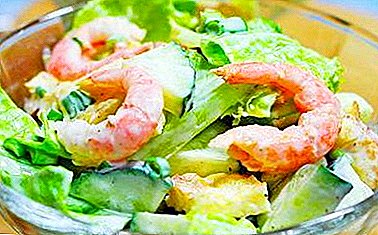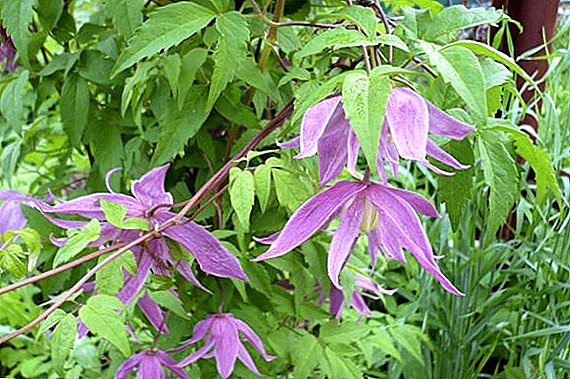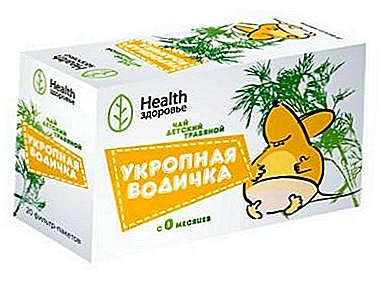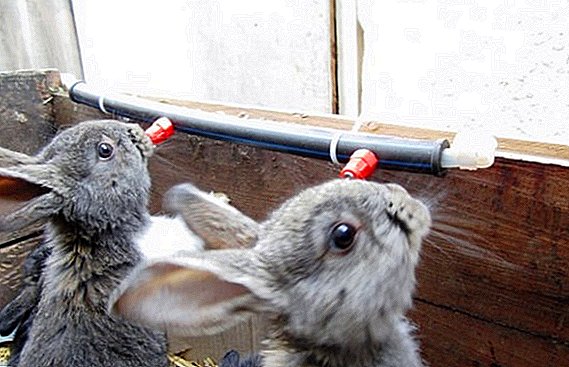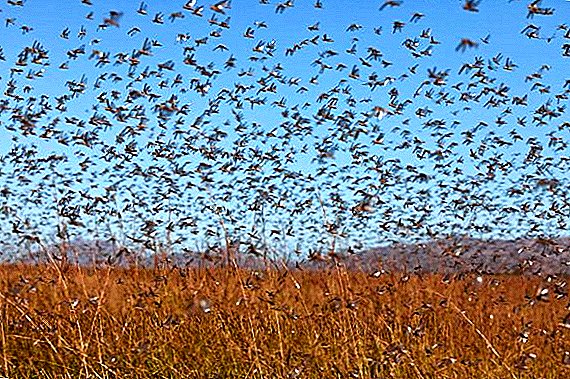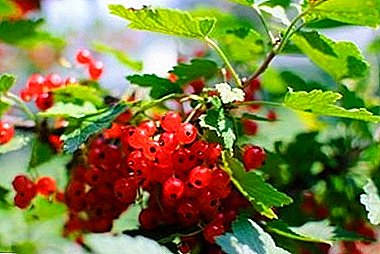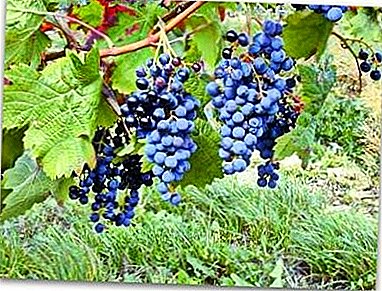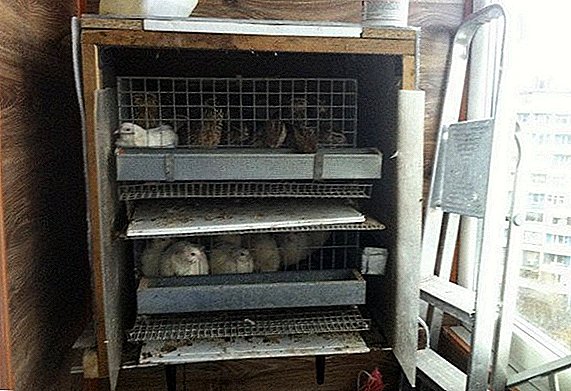 People who want to constantly have dietary quail meat and fresh eggs in their diets, it is possible to start breeding this bird in an apartment, especially since it is not too time consuming and costly. The article will tell you how to do this, starting with the choice of a bird, and ending with the conditions of its keeping and breeding.
People who want to constantly have dietary quail meat and fresh eggs in their diets, it is possible to start breeding this bird in an apartment, especially since it is not too time consuming and costly. The article will tell you how to do this, starting with the choice of a bird, and ending with the conditions of its keeping and breeding.
Can I keep quail in the apartment
In world practice, the content of quails in apartment conditions is not new. In Japanese, for example, these birds are ordinary inhabitants of domestic zoo cornersticks, like canaries or parrots. Quails are unpretentious birds, since the usual conditions of an apartment are suitable for their maintenance, and they do not create noise in urban living conditions.  Here are some simple requirements for their breeding and maintenance:
Here are some simple requirements for their breeding and maintenance:
- equipment of suitable cells;
- balanced diet;
- maintenance of the light mode;
- use of hoods;
- daily cell cleaning.
Did you know? In 1990, quail eggs with embryos were sent into space, from which chicks hatched during the flight. These were the first "terrans", born outside the planet.
Bird selection
In order to successfully breed and grow quails, you need to know which breed is best for this, and then select young and healthy birds correctly.
Which quail is more profitable to keep (breed)
The quails living in nature have a low body weight and low egg production, so the breeders developed about 40 new species of both meat and egg breeds, among which the following species are most beneficial for breeding and maintenance:
- Japanese quail. Birds of the egg direction. Males weigh up to 130 g, females - up to 150 g. Japanese quail egg production is 280-300 eggs per year. It is beneficial to breed this breed because its females are early maturing: at 1.5-2 months of age they are already able to lay eggs.
- Pharaoh. Meat breed. Pharaohs are leading among the breeds in terms of weight gain - up to 280 g, females gaining more than 300 g. The advantages of this type are that they have the largest eggs weighing 18 g. The egg production is 180-200 pieces per year.
- Estonian quail. Egg-laying hens are able to carry up to 285 eggs per year. The weight of females is 190 g, for males it is slightly lower. The advantages of the breed are: laying period of 35-40 days, 90% fertility of eggs, 80% hatchability and 100% of its survival.
- French quail. Poultry meat and egg direction. The weight of the male French breed reaches 300 g, and females - 400 g. Egg production is small, reaching 225 eggs per year, but the advantage is that one egg can weigh 16 g, which is 5 g more than that of the egg breed.




Read about the best breeds of quail for breeding.
The main criteria for choosing a bird
Young quail must be selected according to the following criteria:
- If you do not plan breeding birds, then you can limit yourself to purchasing females.
- It is important to determine the choice of which birds to buy - meat or egg-bearing. Interestingly, the hens are able to produce testicles for 10 months.
- The optimal age of the bird is 1.5 months: at this age, quails can best adapt to the new environment and feed.
- It is important to pay attention to the appearance of the chicks: healthy individuals are active, loudly peep, have a good appetite, dry tummy, clear eyes, clean plumage around the cloaca.
- Birds should not be depleted or overfed.
- The chicks breathing should be clear by the sound.
- Pay attention to the shape of the beak of young animals: if they are bent and blunt, then this is a sign that the birds are old. There should be no growths near the beaks of chicks.

Did you know? The ancient Egyptian alphabet contained a hieroglyph in the form of an image of a young quail, which designated the sounds of "y" and "in."
Features of the content and rules of care
In order to achieve good results in breeding birds in the conditions of an apartment, it is important for them to ensure a suitable microclimate and to properly care for them.
Indoor conditions
Here are some requirements for conditions in the room where the birds are kept:
- Quails do not tolerate increased noise, otherwise they may begin to spit eggs, and their egg-laying itself will decrease. Therefore, they need a room without the constant presence of a person, isolated from the noise produced by household appliances and street traffic.
- You can keep a bird in any convenient room, protected from drafts.
- It is necessary to regularly air the room with quails in order to eliminate odors emitted as a result of their vital activity.
- The optimum temperature in the room where the birds are kept is not lower than +18 degrees (it is acceptable above).
- Light day indoors should not exceed 17 hours.
- Lighting should not be too bright. It is best to use infrared lamps for this.
- The humidity in the room should not be higher or lower than 60%.
- If you follow all these simple rules, the birds will not emit the unpleasant odors of any feathered, and will also feel calm and well-borne.

Cage requirements
The following requirements are imposed on the cage where the birds will be kept:
- The design should have a size corresponding to the number of pets: 1 male and 4 females are placed in one cage. The cage should have the following parameters: length - 40 cm, width - 30 cm, height - 25 cm.
- Cells at the grid must match the age of the quail so that the birds do not fall to the floor.
- For convenience of cleaning, the cages are equipped with a mesh bottom and a special pallet: through the cells the litter will be collected into the pallet.
- You need to fill a pet filler or sawdust into the pan: this will absorb the unpleasant smell.
- Cages need to be equipped with a tray with a slope for collecting eggs.
- Banks with a bird can not be placed in a place where direct sunlight falls.
- Juveniles must be kept separate from adults.
- In order to save space in the room, it is permissible to construct cells in several tiers.
- Nests and perforations inside the cells are not arranged.
- The ceiling in the cages should not be too low and hard, otherwise the birds will be injured when taking off.
- Drinkers and feeders should be placed outside the cage, attaching them to the front grid.
Learn how to make a cage for quails with your own hands.

Important! Once every ten days, quails need to swim in sand-ash baths, so that birds can be cleansed of parasites.
What to feed quail
Quails must always be fed and have access to clean water. They feed the bird three to four times a day at the same time with feeds corresponding to their age.
Chicks
The diet for young animals should consist of the following feeds:
- Bristles, porridge, protein. From the first days, chickens are given boiled hard-boiled and ground with a quail egg, adding to it small oat, corn or wheat cereal (in the ratio 1 part cereal and 3 parts egg) and millet.
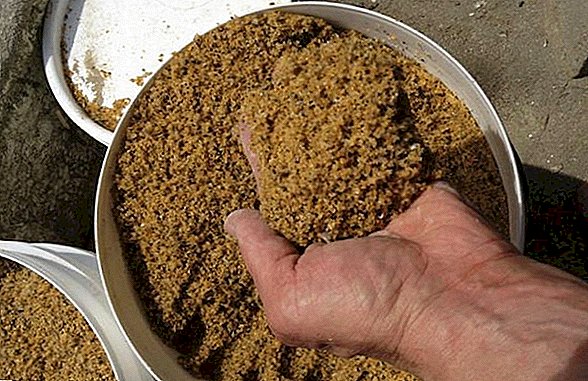 Also, be sure to enter into the diet greens, sour milk, cheese, millet porridge. This menu will help to saturate the body of chicks with protein, carbohydrates, microelements and B vitamins, as well as promote good growth and muscle mass gain. The daily amount of food for each chick is at least 5 g.
Also, be sure to enter into the diet greens, sour milk, cheese, millet porridge. This menu will help to saturate the body of chicks with protein, carbohydrates, microelements and B vitamins, as well as promote good growth and muscle mass gain. The daily amount of food for each chick is at least 5 g. - Gravel. The presence of fine gravel in the diet quail necessarily. This will allow better digestion of feed in the stomach of young animals. The size of the granules should not exceed 2-3 mm.
- Mineral supplements. After the first week of life, quail feeders are placed with sifted sand, calcined in a frying pan, as well as containers with chopped shells, egg shells and chalk. These mineral supplements will strengthen the bones of chicks and saturate the body with calcium, iodine and magnesium. The daily rate of such additives - 1.2%.
- Leguminous and succulent feed. From four weeks, chicks are transferred to a full-fledged adult diet with the addition of pulses (peas, soybeans, lentils), meat and bone meal and fish meal, yeast, sprouted and ground wheat, juicy feeds (carrots, beets), while reducing the amount of protein. Such a measure is necessary in order not to provoke an early egg production, which may affect the health of the livestock and the future egg-laying. Daily feed intake at this age is at least 20 g.

Important! Quails are practically not subject to diseases, so they do not need to be vaccinated.
Adult bird
When feeding adult quails, the total amount of food per day is 30 g per 1 bird. The diet of adult quails should include the following foods:
- corn chop - 40% bone meal or boiled fish is added to it. This feed is considered an energy product;
- peeled oats - source of microelements and vitamins;
- wheat - wheat grain is necessary to increase and maintain the productivity of hens;
- legumes (soy, peas and lentils) - are suppliers of protein, fats and amino acids;
- fishmeal - supplies the bird's body with protein supplements and phosphorus for the formation of the skeleton;
- milk products (yogurt, cottage cheese, boiled egg) - rich in protein and calcium;
- chopped root vegetables and greens - A source of fiber and vitamins;
- chalk, shell rock, gravel, eggshell - mineral supplements for bone formation and good egg-laying.
Read about the proper feeding of adults and quail.

Features breeding quail in the apartment
Quails have no incubation instinct, so at home for these purposes you can use special incubators with different capacities. Here are some subtleties you need to know when using an incubator:
- if the device is designed for 20 chicken eggs, then it can accommodate 80 quail;
- eggs are used for incubation with freshness of not more than 1 week;
- in the first 10 days, the temperature in the incubator should be maintained at 38.5 ° C;
- the last week of incubation temperature should be 38 ° C, and before the birth of chicks - 37.5 ° C;
- It is important to remember that the temperature difference in the incubator from the center to the edges is 0.5 degrees, so eggs should be shifted periodically;
- quails begin to hatch after 17.5 days. This process can last only 5 hours.
Important! As a result of the breeders' efforts to breed new types of quail, the birds lost their incubation instinct. Therefore for their cultivation it is necessary to use incubators.The chicks in the first minutes of life are already covered with a fluff and very active.
 In order for them to grow and develop well, they need proper care:
In order for them to grow and develop well, they need proper care:- immediately after birth, they are placed in brooders (special cages or boxes for young animals);
- the temperature of the room necessary for keeping newborn chicks should be no lower than 34 ° C;
- from one month of age you can reduce the temperature to 25 ° C;
- It is necessary to arrange for the hatched quails to provide round-the-clock lighting, which can be gradually reduced to 17 hours a day.
From the first minutes of life chicks need nutrition with plenty of vitamins, minerals and protein. In addition to self-made feeds, you can use ready-made feed that can guarantee 100% survival of chicks.
Familiarize yourself with the features of choosing a good incubator, as well as the rules for incubating quail eggs.
Summing up on the basis of the above, we note that breeding quails in apartment conditions does not cause much trouble, therefore, given the advice in our article on this topic, you can safely do this exciting and profitable business.


 Also, be sure to enter into the diet greens, sour milk, cheese, millet porridge. This menu will help to saturate the body of chicks with protein, carbohydrates, microelements and B vitamins, as well as promote good growth and muscle mass gain. The daily amount of food for each chick is at least 5 g.
Also, be sure to enter into the diet greens, sour milk, cheese, millet porridge. This menu will help to saturate the body of chicks with protein, carbohydrates, microelements and B vitamins, as well as promote good growth and muscle mass gain. The daily amount of food for each chick is at least 5 g.
